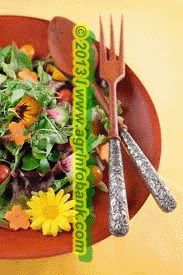By Nan K. Chase
In “Eat Your Yard! Edible Trees, Shrubs, Vines, Herbs and
Flowers for Your Landscape,” author Nan K. Chase shares her first-hand
experience with gardening, landscaping ideas and special culinary uses for
fruit trees. Recipes for edible garden plants include the crabapple and quince,
nut trees, such as the chestnut and almond, and herbs and vines like the bay,
grape, lavender, mint, and thyme. She instructs how to harvest pawpaw,
persimmon, and other wildflowers for your meal as well as figs, kumquats,
olives and other favorites.
Eat Your Yard!
(Gibbs Smith, 2010) has information on 35
edible plants that offer the best of both landscape and culinary uses. Edible garden
plants provide spring blossoms, colorful fruit and flowers, lush greenery, fall
foliage, and beautiful structure, but they also offer fruits, nuts, and seeds
that you can eat, cook, and preserve. Roses are especially delightful for
creating an edible landscape, as shown in the following excerpt.
Eating Roses
The
rose is a botanical mothership with connections to much of what grows in our
gardens: everything from nectarines to strawberries.
Roses
have universal appeal for the intense perfume and entrancing beauty of their
flowers. They also help pollination among other plants.
There
are wild roses native to North America, or introduced and naturalized, which
are adaptable from seaside to mountaintop. And there are hybridized roses,
with thoroughbred refinement, suitable only where the climate cooperates and
people can pamper them.
Wild
roses, to make the situation more complicated, can be quite good in the garden
— or highly destructive.
Let’s
agree to cheat and consider several native North American roses and several
imported roses together (imported, that is, during colonial times or earlier
and then spreading) before choosing the most useful and least intrusive for the
edible landscape.
First,
a word about why roses should be considered edible at all.
For one thing, rose petals have a light, sweet flavor and can
be eaten fresh in salads, where they add unexpected color; one writer pairs
them with cucumbers for a visual treat. The young shoots of some roses,
carefully cleaned, are also edible, with a pleasant crunch.
It is the
rose’s fruit that merits attention and that has a long, nutritionally important
role in civilization, especially in northern climates where other fruits are
difficult to grow, and during wartime, when sources of vitamin C are
interrupted.
The small
fruits called rose hips have the highest vitamin C content of any fresh food,
and while they can be eaten raw, more commonly rose hips are cooked before
use. The seeds, which are hairy and give bad tickles to the throat, are almost
always either cooked and strained out or just spit out. Rose hips can be
processed—strained for juice—to make jelly, syrup, and sauces. That goodness
can be bottled and kept all year. Rose hips and rose petals also produce
specialty wines, cordials, and liqueurs.
Hips are
pulpy, seed-filled pods, which in late fall grace rose bushes with their red or
orange colors (even dark blue). The hips vary in size and shape, usually not
much larger than a grape. Covered in frost in a landscape otherwise drained of
color, they make a spectacular display.
Unlike the
more demanding hybrid roses, wild roses have spent tens of millions of years
adapting to local conditions. They are nearly disease free and pest free. They
require little pruning or fertilizing, can withstand temperatures well below
zero, and can grow in poor soils.
In some
cases, wild roses grow to ten or fifteen feet high, forming impressive hedges.
In all cases, before planting wild roses check with local agricultural
officials to see if your choice is even legal—some wild roses are considered
noxious and are banned. Of genus Rosa the main offenders are multiflora roses,
including Cherokee rose (ironically, not a true native). Don’t plant these.
Do
investigate other species of Rosa for what they can add to your own edible
landscape: dog rose, prairie rose, Carolina rose, glauca rose, nootka rose (a
western native), and countless crossbred native roses.
My favorite is R. rugosa, the wrinkled rose. I love its highly
textural green leaves and its intoxicating pink flowers.
Rose Hip Sauce Recipe for Meat
2 cups rose
hips, seeded
1 1/2 cups water
1/2 cup sugar
3 tablespoons cornstarch
1/2 cup white wine (optional)
1 1/2 cups water
1/2 cup sugar
3 tablespoons cornstarch
1/2 cup white wine (optional)
Simmer the
rose hips in the water for 1 hour. Add the sugar and cook for 5 more minutes.
Add the cornstarch and continue simmering for 3 minutes, stirring constantly.
Add the white wine just before serving, if desired.
Reprinted
from A Taste of Heritage: Crow Indian
Recipes and Herbal Medicines by Alma Hogan Snell by permission of
the University of Nebraska Press. ©2006 by Alma Hogan Snell.
 Rose Hip
Jelly Recipe
Rose Hip
Jelly Recipe
This is best made after the first frost. Pick about a pound of rose hips; cut off the blossom. Barely cover with water and simmer until fruit is very soft. Use a jelly bag to extract juice. Add a box of pectin, bring to a high boil quickly, add an amount of sugar equal to amount of juice. Bring to a high boil and hold for one minute. Stir and skim. Pour into sterilized jars and cover with paraffin.
Source of
Article: http://www.motherearthnews.com/







.jpg)
Post a Comment